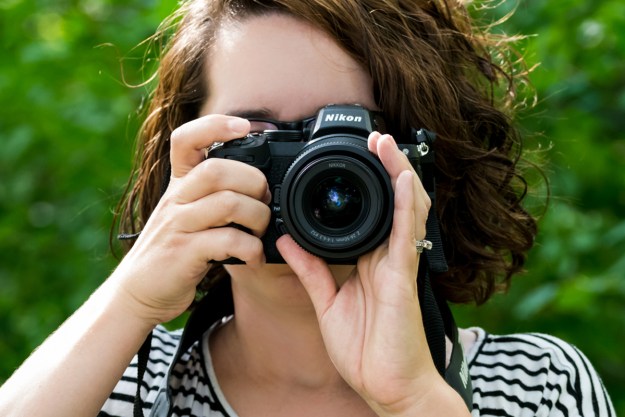It seems that only a few years ago, cameras with 5-megapixel sensors were the golden standard in digital imaging, with more resolution than some even thought necessary at the time. Since then, resolution has continued to skyrocket, prices have continued to fall, and now even a budget pocket cam might be packing a 12-megapixel sensor.
Image Courtesy of Hasselblad
But don’t think we’ve hit the ceiling just yet. All that resolution may start to look inconsequential for amateurs who don’t expect to blow their shots up into sizes any bigger than the standard 8 x 10, but for pros whose work will end up on posters, billboards and even buildings, more resolution can always make their shots look better. And the high-end Swedish outfit Hasselblad is meeting that need as never before. Their latest professional DSLR, the H3DII-50, takes resolution to a new extreme with a sensor that boasts a jaw-dropping 50 megapixels.
The camera will be the first (and currently, the only) to use Kodak’s yet-to-be-released KAF-50100 sensor, which captures images at an unreal 8176 x 6132 resolution. Using desktop resolutions, that’s like stacking six 1280 x 768 monitors high, and eight across.
It accomplishes this resolution, in no small part, thanks to its rather unusual physical size. At 36mm tall and 48mm across, the sensor dwarfs even what you might find in a camera like the well-respected Canon Digital Rebel XT, meaning it can fit more pixels for more resolution, and capture more pixels for overall image quality.
Typically, all the data from such a large resolution poses major problems for camera speed, since shuttling all those bits from a sensor to a memory card takes longer and longer as resolution increases, but Kodak has also beefed up the number of output channels (think data pipes) on the KAF-50100 to help it accommodate. As a result, the camera can write its enormous 65MB images at a rate of one per second, so pros won’t have to miss a beat.
The H3DII-50 adopts the same form factor of its predecessor, the H3DII-39 – which is a good thing. By using the same body, it’s able to make use of all accessories, most importantly, Hasselblad’s broad line of existing lenses. You can also get it equipped with either a standard eye-level viewfinder or waist-level viewfinder, and there’s a 3-inch LCD as well.
Image Courtesy of Hasselblad
The H3DII-50 is classified as a medium-format camera, meaning it’s a step above even the bulky 35mm DSLR cameras that most people think of when they picture a “pro” camera. In short, it’s quite a heifer. With a weight of five pounds and length of 8.3 inches (with lens), you’ll either be using it on a tripod for studio photography, or getting a major workout in the field. But such is the burden of the pro photographer.
How much will this megapixel mammoth set you back when it debuts in October? About as much as you might pay for another piece of fine Swedish engineering: the Saab 9-3 convertible. That’s $39,995, to be exact. But for professionals whose shots will make and break their careers, or amateurs who just desire the finest available, there’s nothing else like it on the market. More information can be found at Hasselblad’s website.
Editors' Recommendations
- Nikon sale: Get up to $700 off select Nikon cameras and lenses
- How to turn off the camera sound on an iPhone
- Best GoPro deals: Save on action cameras and accessories
- GoPro unveils its latest action camera, the Hero 12 Black
- 5 reasons I love the Leica M11 camera and 5 reasons I don’t




